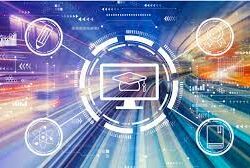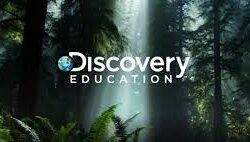This article explores the profound changes that technology has brought to the field of education over the past few decades. It provides a comprehensive overview of how various technological advancements have revolutionized teaching and learning methods, enhanced accessibility and inclusivity, and expanded the horizons of education. The article also discusses the challenges and potential risks associated with the integration of technology in education. By examining the positive and negative aspects of technology’s influence on education, we gain a deeper understanding of its transformative power in shaping the future of learning.
Introduction:
Education has always been a fundamental aspect of human development and progress. Traditionally, education primarily relied on textbooks, classrooms, and face-to-face interactions. However, with the rapid advancement of technology, the educational landscape has undergone a remarkable transformation. The integration of technology into education has revolutionized the way knowledge is imparted and acquired. This article delves into the myriad ways in which technology has changed education, exploring its impact on teaching methodologies, accessibility, inclusivity, and global learning opportunities.
Evolution of Teaching and Learning Methods:
a. Interactive Learning: Technology has facilitated a shift from traditional passive learning to interactive and engaging learning experiences. Virtual simulations, gamified learning platforms, and augmented reality (AR) applications have made learning more immersive and enjoyable, fostering deeper understanding and retention of knowledge.
b. Personalized Learning: Adaptive learning platforms and intelligent tutoring systems leverage artificial intelligence (AI) algorithms to tailor educational content and activities to the specific needs and learning styles of individual students, enhancing their learning outcomes.
c. Collaborative Learning: Online collaboration tools, video conferencing, and cloud-based platforms have enabled seamless collaboration among students and teachers, transcending geographical barriers. This has nurtured teamwork, critical thinking, and problem-solving skills among learners.
Accessibility and Inclusivity:
a. Overcoming Geographical Barriers: Technology has facilitated remote learning, enabling students to access educational resources and expertise from around the world. Online courses, virtual classrooms, and webinars have democratized education, particularly for learners in remote areas or those with limited access to traditional educational institutions.
b. Learning Support for Students with Special Needs: Assistive technologies, such as text-to-speech software, screen readers, and speech recognition tools, have empowered students with disabilities, enabling them to participate fully in educational activities. Moreover, online platforms have facilitated customized learning environments for students with diverse learning needs.
Expanding Horizons:
a. Global Learning Opportunities: Technology has opened up a world of educational opportunities beyond the confines of the traditional classroom. Online courses and virtual exchange programs have allowed students to engage with peers and educators from different cultures and backgrounds, broadening their perspectives and fostering global citizenship.
b. Open Educational Resources (OER): The proliferation of digital resources, such as e-books, open courseware, and online educational videos, has significantly expanded access to educational materials. OER has reduced financial barriers and empowered self-directed learners to acquire knowledge at their own pace.
Challenges and Risks:
a. Technological Divide: While technology has the potential to bridge educational gaps, it can also exacerbate existing inequalities. The digital divide, lack of infrastructure, and disparities in access to technology pose challenges for marginalized communities, widening the education gap.
b. Information Overload and Misinformation: The abundance of information available online requires learners to develop critical thinking and digital literacy skills. The spread of misinformation and fake news also necessitates the cultivation of media literacy to discern reliable sources of information.
Conclusion:
The integration of technology in education has brought about a paradigm shift in teaching and learning methodologies, making education more engaging, accessible, and inclusive. From interactive and personalized learning experiences to global educational opportunities, technology has revolutionized the educational landscape.
However, it is crucial to address the challenges and risks associated with technology’s integration to ensure equitable access, develop critical thinking skills, and promote responsible use of digital resources. By embracing technology as a powerful tool, educators can leverage its transformative potential to shape the future of education and unlock the full potential of learners worldwide.









